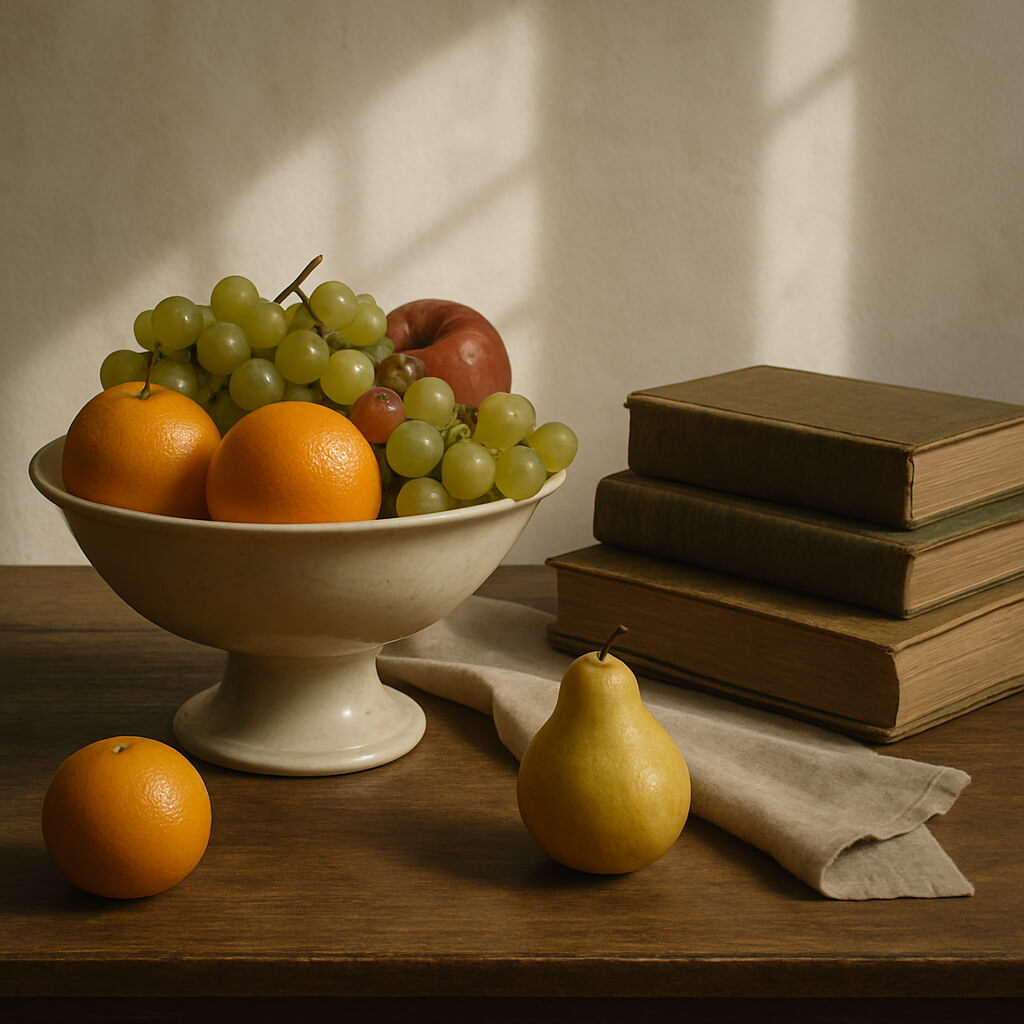May 30, 2025

Still life photography is a timeless and artistic genre that transforms ordinary objects into compelling visual narratives. Rooted in centuries-old traditions and inspired by classic still life paintings, this photographic style focuses on arranging and capturing inanimate subjects—often everyday items—with intention and artistic flair.
Whether you're photographing a vintage watch on a wooden table or a bowl of fresh citrus fruit basking in window light, still life allows you to explore composition, lighting, texture, and mood—all in a controlled setting. It’s the ideal starting point for beginners who want to develop technical skills while nurturing their creative vision.
Unlike high-speed genres like wildlife or sports photography, still life invites a slower, more contemplative process. You have full control over every aspect of your shot—from object placement to lighting and framing. This makes it the perfect environment to:
Still life photography builds the foundational skills that can later be applied to genres like food, product, or even portrait photography. If you’re considering turning your passion into profit, it’s essential to know how to price your photography services to ensure your work is both artistically and financially rewarding.

Still life is a versatile genre with several unique styles. Here are the most popular forms:
1. Traditional Still Life : This style mirrors classic paintings—featuring items like fruits, vases, flowers, books, and draped fabric. The emphasis is on elegance, texture, and timeless beauty.
2. Product Still Life : Used commercially to highlight items for sale—like cosmetics, gadgets, food, and jewelry. Clean, well-lit compositions showcase product features while maintaining aesthetic appeal.
3. Conceptual Still Life : Objects are carefully curated to communicate a deeper idea or message. Whether it’s a metaphor for time, decay, or rebirth, this style invites storytelling through symbolism.
4. Minimalist Still Life : Less is more. Using neutral colors, negative space, and one or two well-placed objects, minimalist still life focuses on clarity and form, letting simplicity speak volumes.
If your goal is to sell your work online, learn more about the best photo-selling websites in 2025 and explore how to generate income from still life through prints, stock photography, and online galleries.
1. Start with a Simple Setup : You don’t need a studio to begin. Use a tabletop near a window, a neutral background, and items from around your home—fruits, mugs, candles, or stationery. Simplicity helps you focus on light and composition without distractions.
2. Master the Light : Lighting is everything in still life photography. Natural window light offers a soft, diffused glow ideal for subtle shadows and natural tones. To expand your skills, experiment with artificial setups. This beginner’s guide to creative lighting breaks down how to use light sources, reflectors, and shadows to enhance mood and detail.
3. Focus on Composition : The way you place objects affects how the viewer interprets your image. Use classic techniques like the rule of thirds, leading lines, or visual symmetry. Pay attention to height variations, shapes, and color distribution.
4. Tell a Visual Story : Think beyond aesthetics. A well-staged still life can express mood—whether it’s cozy and nostalgic or stark and dramatic. Carefully selected props and thoughtful arrangement add layers of meaning.
5. Edit with Intention : Editing is where your still life truly comes to life. Use adjustments to enhance tone, contrast, and mood. Understand the difference between color correction and color grading so your final image reflects your vision, not just what the camera saw.
6. Use a Tripod for Stability : Still life often involves slow shutter speeds to allow more light in. A sturdy tripod ensures sharpness and lets you experiment freely with composition without camera shake. Browse this list of the best tripods for 2025 to find gear that matches your needs and budget.
Post-processing is a vital step in still life photography. It’s where you fine-tune your image, remove distractions, and polish the visual story.
Top editing apps like Lightroom, Snapseed, and Affinity Photo allow you to control every aspect—from tone curves to selective sharpening. For recommendations tailored to both desktop and mobile, check out the best photo editing apps in 2025.
Sometimes, unwanted elements sneak into your perfect shot. When that happens, you can remove unwanted objects seamlessly using modern retouching tools.
Still life is not just an art form—it’s a marketable skill. From product shoots to stock photos and art prints, there are plenty of ways to monetize your work. Here’s how to start:
With creativity, patience, and a strategic approach, still life photography can become both a passion and a profession.
Still life photography is about slowing down and noticing beauty in the details. From a wilted flower to a stack of old books, each subject offers an opportunity to create art. As a beginner, you’ll find it a forgiving and fulfilling way to practice essential skills while developing a personal style.
So gather your objects, set the scene, and let the light guide your vision. With each frame, you’re not just taking a photo—you’re telling a story in silence.
Stay up to date with the newest tips, gear reviews, and step-by-step guides to elevate your photography journey from home and beyond.